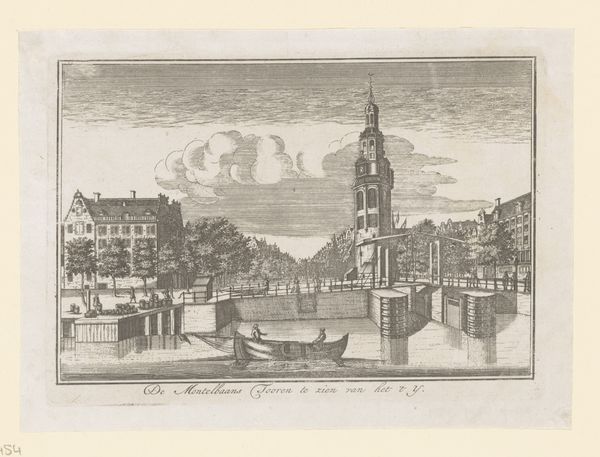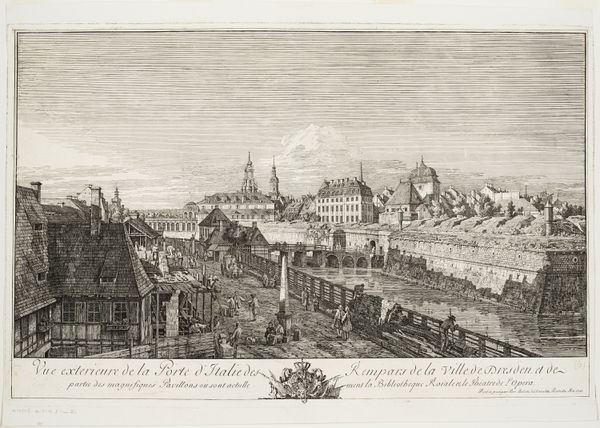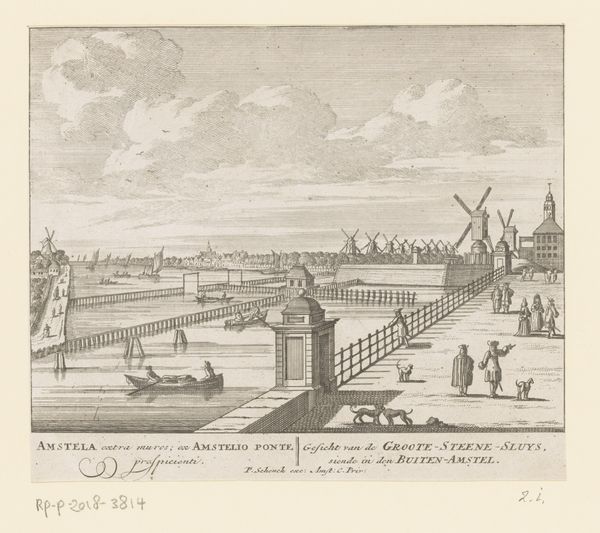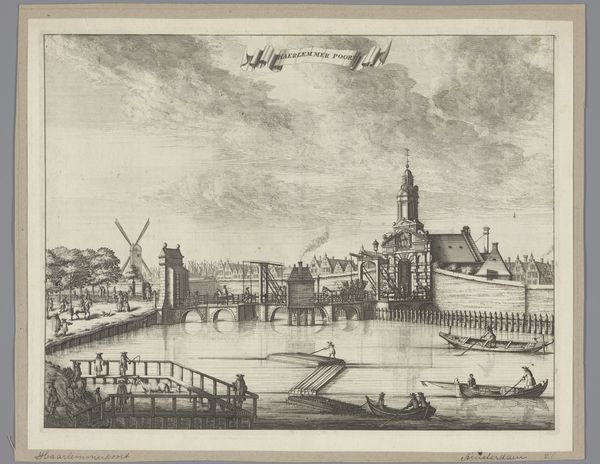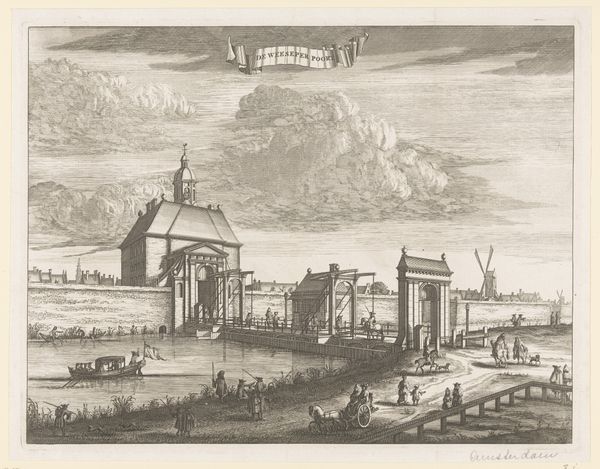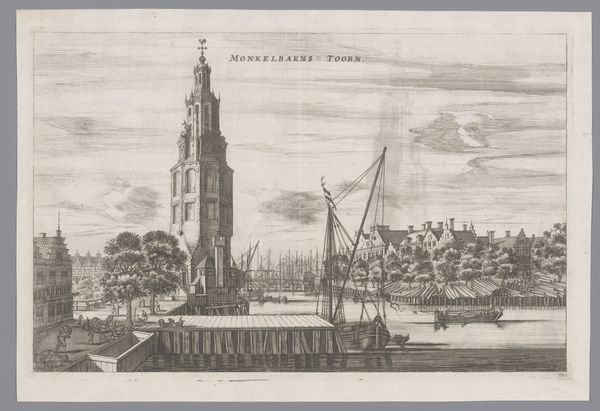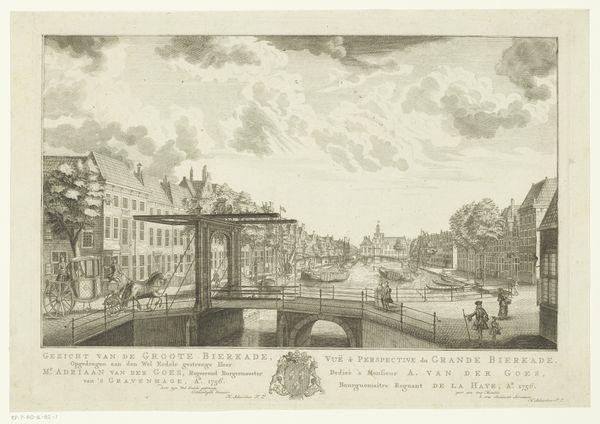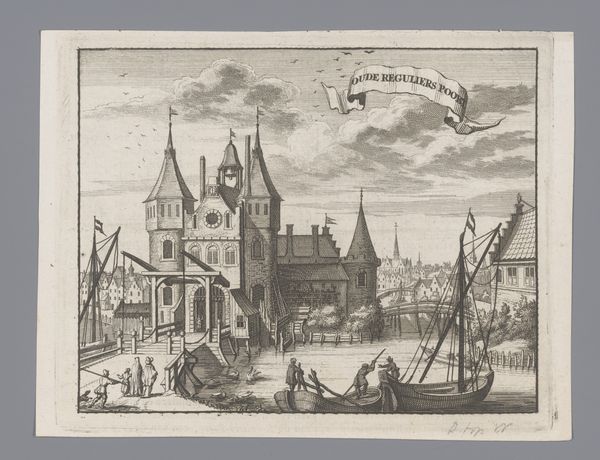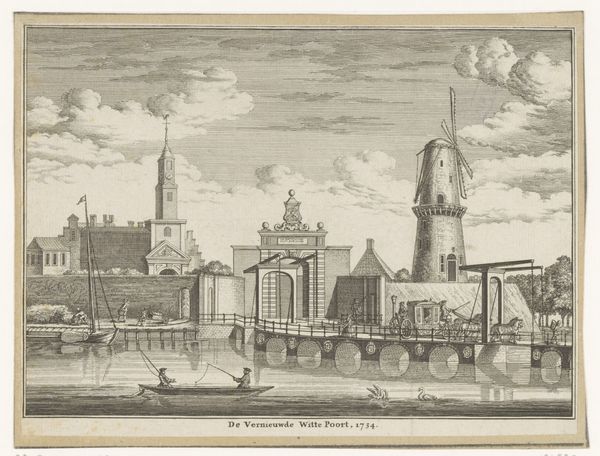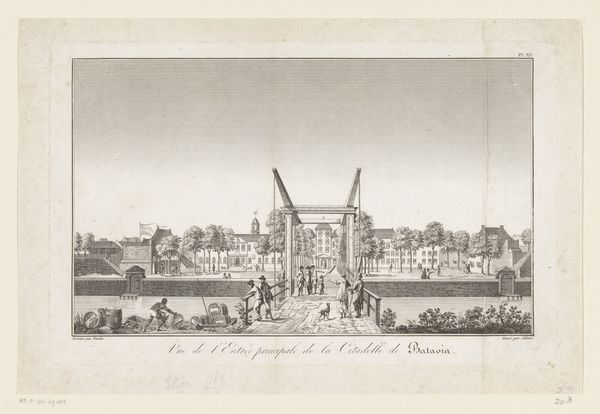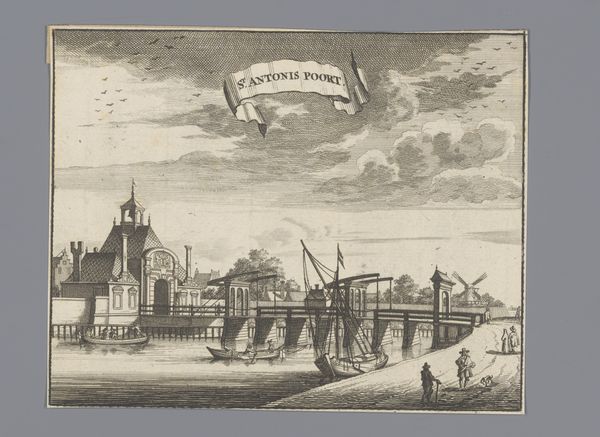
print, engraving
#
dutch-golden-age
# print
#
landscape
#
cityscape
#
engraving
Dimensions: height 190 mm, width 302 mm
Copyright: Rijks Museum: Open Domain
Jacob van Meurs made this print of the Haarlemmerpoort in Amsterdam sometime in the 17th century, using etching or engraving on a metal plate. Consider how the marks of this process influence what we see. The artist would have painstakingly cut lines into the metal to hold ink, wiping the surface clean before printing. This painstaking process results in finely detailed lines, which define the architectural elements of the gate, bridges, and surrounding buildings. The image's texture comes entirely from these marks, built up to create areas of light and shadow. The choice of printmaking, a relatively accessible medium, also speaks to the broader dissemination of images in the Dutch Golden Age, reflecting the rise of a mercantile society and a growing middle class. The image represents a thriving port city, complete with windmills and boats, emphasizing Amsterdam’s importance as a center of trade and commerce. The amount of detailed work that went into producing this print is reflective of the values of labor, and a culture of production, in which these detailed cityscapes found a ready market. By appreciating the material and the making, we see how this image is much more than just a picture; it is a testament to the values of craft, commerce, and the cultural significance of its time.
Comments
No comments
Be the first to comment and join the conversation on the ultimate creative platform.
